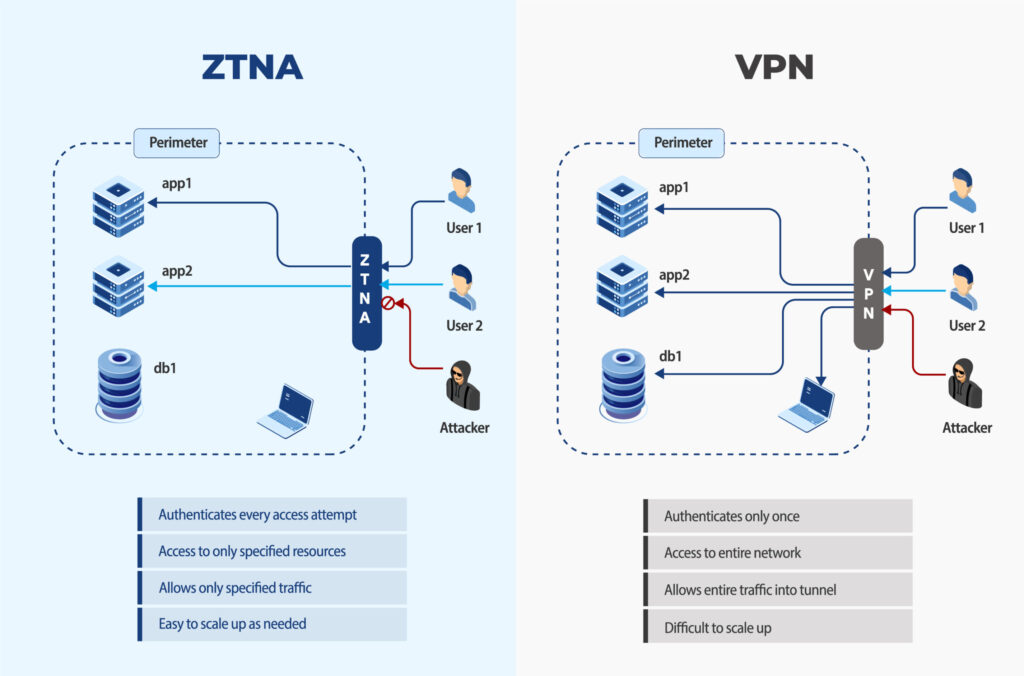
For years, Virtual Private Networks (VPNs) have been the go-to solution for secure remote access. But as today’s cybersecurity threats grow more complex—and as more users connect from more locations and devices—VPNs are proving to be outdated and increasingly risky. That’s where Zero Trust Network Access (ZTNA) comes in. Designed for modern networks, ZTNA offers a safer, smarter approach by giving users access only to what they need—nothing more.
At WJR Technologies, we’re helping schools and small businesses in St. Louis make the transition from legacy VPNs to ZTNA-based security frameworks.
The Problem with VPNs
VPNs were built to create a secure tunnel between a remote device and a private network. But the problem is—they give users broad access once they’re in. That kind of open access can be dangerous, especially if credentials are compromised or if a device is infected with malware.
Some of the most common issues with VPNs include:
- Limited visibility into user behavior
- Full network access for all users
- Difficult scalability and management
- Increased exposure to lateral movement by attackers
What Is Zero Trust Network Access (ZTNA)?
ZTNA operates on a simple but powerful concept: never trust, always verify.
Instead of assuming that users inside the network are safe, ZTNA continuously verifies every user and device before allowing access—and only to specific resources they are authorized to use.
ZTNA works by:
- Verifying user identity and device health
- Granting access to individual apps, not the full network
- Continuously monitoring for abnormal behavior
It’s a more intelligent, application-aware model that gives IT teams control without compromising user experience.
ZTNA vs. VPN: A Side-by-Side Comparison
| Feature | VPN | ZTNA |
|---|
| Network Access | Full | App-specific |
| Trust Model | Trust once | Continuous verification |
| Deployment | On-prem / Hardware-based | Cloud-native |
| Visibility | Limited | High visibility into user activity |
| Risk Exposure | Higher | Minimized with least-privilege access |
Why VPNs Pose a Security Risk Today
Modern cyberattacks often target VPNs as an easy entry point. A single compromised login can expose your entire internal network. Attackers can move laterally, access sensitive data, and go undetected for weeks or even months.
In schools and small businesses, this could mean a breach of student information, financial data, or operational systems—resulting in lost trust, downtime, and regulatory issues.
ZTNA for Schools and SMBs
ZTNA is especially powerful for education and SMB environments, where users need secure access but IT resources are often limited.
Imagine giving teachers and staff secure access to online grading systems or cloud-based platforms—without ever exposing your full internal network. ZTNA makes this possible by:
- Supporting secure remote work and hybrid learning
- Limiting access to only essential applications
- Making compliance easier with tighter access controls
Make the Switch with WJR Technologies
ZTNA isn’t just a trend—it’s a necessary evolution in cybersecurity. And WJR Technologies is here to guide you through it. We help K–12 schools, higher education, and SMBs throughout the St. Louis area replace risky VPN setups with modern, secure ZTNA solutions tailored to your environment.
